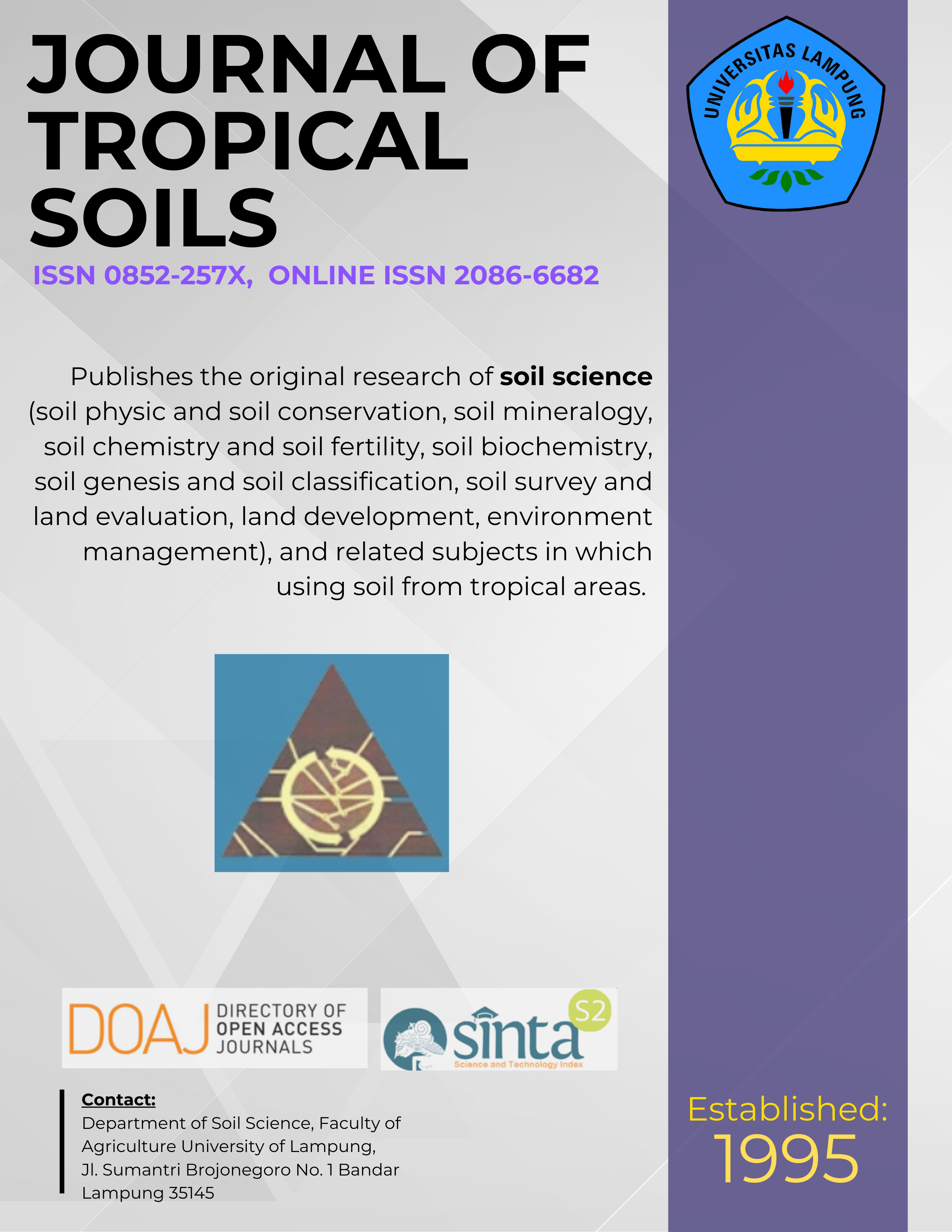Evaluation for the Potential Use of Silicate Rocks from FourVolcanoes in Indonesia as Fertilizer and Soil Ameliorant
Main Article Content
Abstract
Silicate rocks, the abundant plant nutrient source in Indonesia, have not been evaluated for use as a fertilizer/and soil ameliorant. This research was aimed to identify (1) mineral and elemental compositions of silicate rocks originated from Galunggung, Kelud, Tambora, and Rinjani Volcanoes and (2) soil properties determining dissolution rate of plant nutrients from the silicate rock fertilizers (SRFs). The rocks were ground with a ball mill for 10 min providing SRFs with medians of particle size of 30 – 50 mm. Each SRF was added to 6 soils from West Java, East Java, and Lombok Island at a rate equivalent to 20 t ha-1, incubated for 28 days in a laboratory condition. Results indicate that adding SRFs clearly increased soil pH with negligible effect on soil salinity. Adding SRFs also increased quantity of citric-oxalic-extractable plant nutrients (Ca, K, Zn, and Cu) and activity of soil micro-organisms. Dissolution of plant nutrients from the SRFs in the soils was mainly determined by combination factors of C-organic content and pH of soils before application of the SRFs. It was concluded that SRFs originated from those volcanoes may be used as a plant-multi nutrient source and a remedial agent for acidic and biologically degraded soils. However, the true effectiveness of SRFs for those uses needs to be further tested under various soil-plant systems.
Downloads
Download data is not yet available.
Article Details
Section
Articles
License for Authors
Authors who publish with this journal agree to the following terms:
- Authors retain copyright and grant the journal right of first publication with the work simultaneously licensed under a Creative Commons Attribution License that allows others to share the work with an acknowledgement of the work's authorship and initial publication in this journal.
- Authors are able to enter into separate, additional contractual arrangements for the non-exclusive distribution of the journal's published version of the work (e.g., post it to an institutional repository or publish it in a book), with an acknowledgement of its initial publication in this journal.
- Authors are permitted and encouraged to post their work online (e.g., in institutional repositories or on their website) prior to and during the submission process, as it can lead to productive exchanges, as well as earlier and greater citation of published work (See The Effect of Open Access).
License for Regular Users
Other regular users who want to cite, distribute, remix, tweak, and build upon author’s works, even for commercial purposes, should acknowledge the work’s authorship and initial publication in this journal, licensed under a Creative Commons Attribution License.
How to Cite
Evaluation for the Potential Use of Silicate Rocks from FourVolcanoes in Indonesia as Fertilizer and Soil Ameliorant. (2009). JOURNAL OF TROPICAL SOILS, 14(1), 1-8. https://doi.org/10.5400/jts.2009.v14i1.1-8

